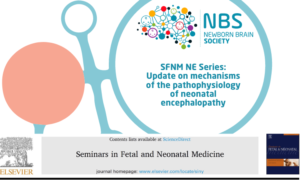
SFNM NE Series: Bedside and laboratory neuromonitoring in neonatal encephalopathy
Practice Points: EEG/aEEG While aEEG is helpful to monitor trends at the bedside and can diagnose most seizures, cEEG remains the gold standard for seizure
|
INBBC 2025 - 16th International Newborn Brain Conference - Feb 19 - 21, 2025
|
To submit a news item for consideration, please email news@newbornbrainsociety.org

Practice Points: EEG/aEEG While aEEG is helpful to monitor trends at the bedside and can diagnose most seizures, cEEG remains the gold standard for seizure

Practice Points: Communication amidst therapeutic hypothermia is challenging; parents desire timely, transparent, and consistent communication with clinicians. Parents value opportunities to participate in their infant’s

Practice Points: The evolution of injury following hypoxic-ischemic injury involves multiple mechanisms and progresses over a prolonged period of time. Cell death often presents as

Practice Points: Clinicians looking after neonates with NE treated with TH must be aware of SFNN and must be assessed the neonates routinely for SFNN

Practice Points: Non-pharmacologic approaches form the foundation for providing comfort for neonates with NE receiving TH Benzodiazepines should be avoided for sedation Morphine 50 μg/kg

Practice Points: Haematological abnormalities are common in neonates with neonatal encephalopathy (NE), including leukocytosis, thrombocytopenia and coagulopathy. nRBCs and EPO may indicate the degree of